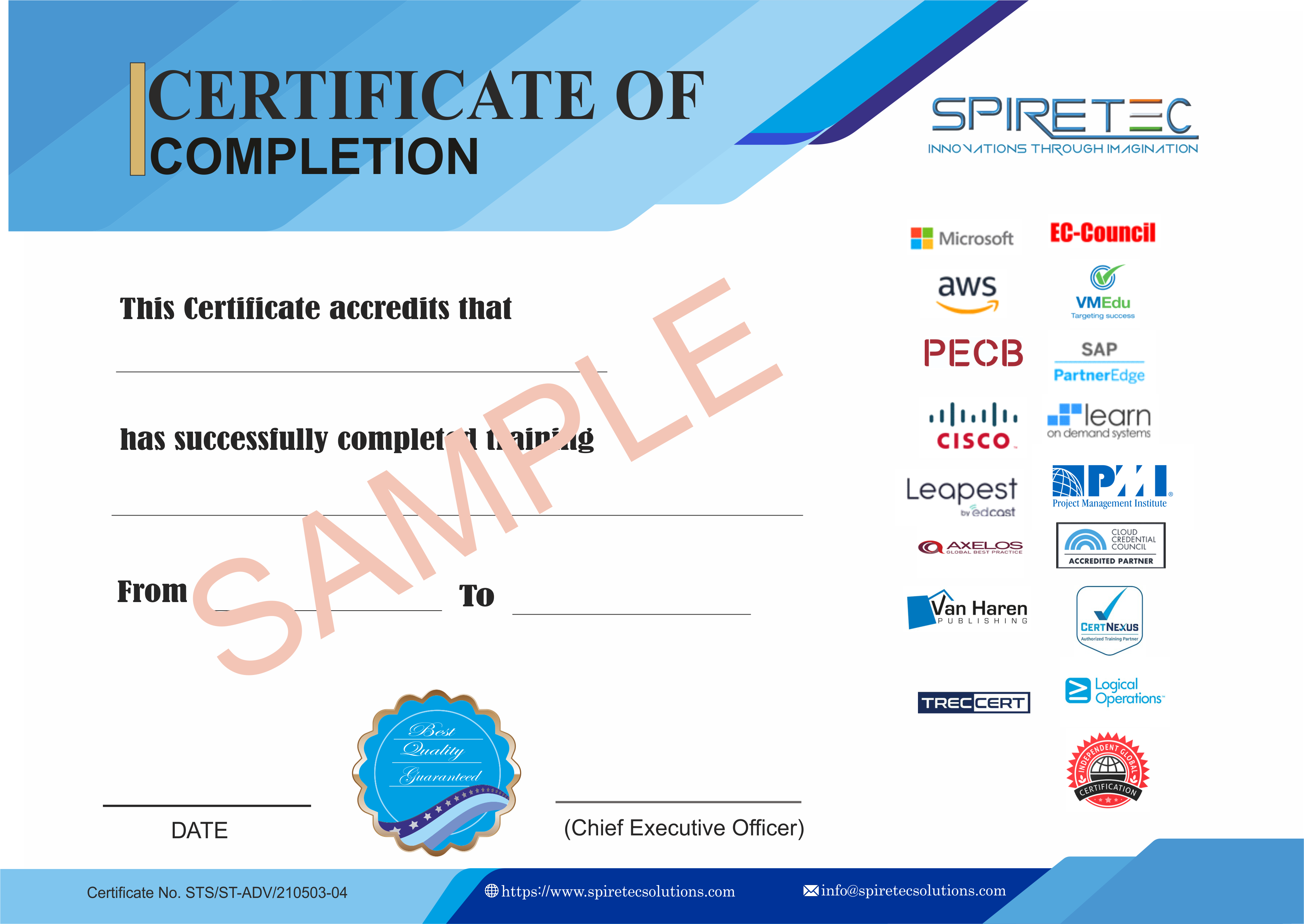The 55238 : SharePoint Online for Administrators course offers a comprehensive guide for administrators to effectively manage SharePoint Online within the Office 365 ecosystem. This course aims to empower learners with a thorough understanding of SharePoint's capabilities, from basic configuration to advanced enterprise content management and everything in between. Participants are introduced to the Office 365 Administration Center, where they learn to configure reporting, manage user identities and domains, build hybrid scenarios, and manage SharePoint Online with PowerShell. It sets a solid foundation with practical lessons on comparing SharePoint On-Premises with SharePoint Online and covers important aspects such as OneDrive, Yammer redirection, and hybrid search. The curriculum progresses through advanced topics, including managing site collections, user profiles, and data connections, highlighting the importance of understanding PowerApps, Flow, and Power BI. It delves into configuring the Term store, optimizing the search service, managing apps, and understanding enterprise content management (ECM) in SharePoint Online. By the end of the course, administrators will be proficient in managing options for SharePoint Online, including Information Rights Management and site classification, ensuring they are equipped to handle the platform's complexities. This knowledge will help learners streamline their organization's SharePoint environment, enhancing collaboration and productivity while maintaining robust security and compliance.
Audience Profile:
This course is designed for administrators who need to set up, configure, and manage SharePoint Online as part of their Office 365 administration.
At Course Completion:
After completing this course, students will be able to:
-
Understand the architecture of SharePoint Online.
-
Gain knowledge of all the components in SharePoint Online.
-
Have hands-on experience configuring the components and options of SharePoint Online.
-
Work with site collections and storage options.
-
Manage user profiles and social profiling.
-
Understand and configure data connections in SharePoint Online.
-
Build a taxonomy structure.
-
Understand and configure search in SharePoint Online.
-
Configure and deploy apps.
-
Understand and define enterprise content management, security, and compliance.
-
Configure additional options and features in SharePoint Online, such as Information Rights Management.
Prerequisites:
Course Outline:
Module 1: Introduction to Office 365 and SharePoint Online
This first module will take you on a tour of Office 365 and SharePoint Online and ensure you are familiar with all the components that will be covered in later modules. You will understand the way identity management works in Office 365 and also the tools required to manage the environment. You will also learn about the options for migrating to SharePoint Online and building hybrid scenarios.
Lessons
-
Introduction to the Office 365 Administration Center
-
Configure Reporting
-
Accessing SharePoint management tools
-
Accessing security and compliance
-
Managing Office 365 and SharePoint Online with PowerShell
-
Comparing On-Premises SharePoint with SharePoint Online
-
User identity in Office 365 and SharePoint Online
-
Managing user domains
-
Building Hybrid scenarios
-
OneDrive and Sites redirection
-
Yammer redirection
-
Understand hybrid search
-
Hybrid business data connectivity
-
Hybrid taxonomy
Lab 1: Configuring the Office 365 environment
-
Create a new Outlook.com account
-
Create a new Office 365 Trial
-
Install Azure Active Directory PowerShell
-
Install SharePoint Online Management Shell
-
Create test users
-
Install Office 2016 on to your client
After completing this module, students will be able to:
-
Describe the key components of SharePoint Online
-
Navigate Office 365 and SharePoint admin centers
-
Understand identity management
-
Understand how to manage the environment in PowerShell
-
Understand hybrid scenarios
Module 2: Working with Site Collections
This module will help you to understand the topology of site collections and how to create and manage them. You will learn how to define delegated control and administration plus configure storage options and quotas for different site collections. You will learn how to configure external access to your content and sharing with external identities and finally how to delete and recover site collections including PowerShell management.
Lessons
-
Introduction to classic and modern admin centers
-
Creating Site Collections
-
Defining ownership and security for site collections
-
Configuring Storage
-
Configure External Access to site collections
-
Recovering site collections
-
Configure external sharing
-
Managing site collections with PowerShell
Lab 1: Managing Site Collections
-
Create a new site collection using the UI
-
Create a new Modern site collection
-
Create a new site collection using PowerShell
-
Configure Storage Quotas
-
Configure external sharing
-
Restore site collections
-
Create a site and deploy content for later labs
After completing this module, students will be able to:
-
Understand Site Collections
-
Manage and delegate site collections
-
Configure external sharing
-
Delete and Restore site collections
-
Manage site collections with PowerShell
Module 3: Managing User Profiles
User Profiles are a key part of any social and collaboration platform, and in this module, you will learn how to manage the user profile options in SharePoint Online including the building of custom profile properties. You will also learn how to create and configure audiences for targeted content and then use the audiences for personal site redirection. Finally, you will learn how to configure the search options and cleanup jobs for the profile service.
Lessons
-
Overview of the profile service
-
Defining profile properties
-
Map profile properties to a term store
-
Creating custom profile properties
-
Managing audiences
-
Creating audiences
-
Managing user profile policies
-
Configure trusted my site host locations
-
Configure preferred search center locations
-
Defining read access permission levels
-
Configuring newsfeed options
-
Setup email notifications
-
Configure my site cleanup
Lab 1: Managing the User Profile service
-
Create a new custom user profile property
-
Create a custom property mapped to a metadata term
-
Create an Audience using profile properties and target content
-
Configure My Site cleanup accounts
After completing this module, students will be able to:
-
Understand the profile service in SharePoint Online
-
Create a custom property mapped to a metadata term
-
Define profile policies and security control
-
Create and manage audiences
-
Define management of my sites when a user's my site is deleted
Module 4: Working with Data Connections
This module focuses on building and configuring data connections and the challenge of SharePoint of displaying data that resides in other data sources and then displaying that data in SharePoint sites. You will learn how to leverage PowerApps for forms development and flow to build business processes along with Power BI to display data. The business connectivity service is designed to allow data connections to be defined in order to display data from other locations such as Azure SQL and then allow users to add data web parts without the need to understand data connection configuration. You will also learn the importance of using the secure store service alongside business data connections to define data access to remote data storage using single sign-on.
Lessons
-
Introduction to Data Connections
-
Overview of PowerApps, Flow, and Power BI
-
Overview of the business connectivity service
-
Introduction to BDC definition files
-
Creating BDC definition files
-
Introduction to the secure store service
-
Configuring the secure store service
-
Creating secure store target application settings
-
Configure connections to cloud services
-
Configure connections to on-premises services
-
Tools to build data connections
-
Creating external content types
-
Building external lists using external data
Lab 1: Managing the business data connectivity service
-
Create a new PowerApps form
-
Create a new Flow
-
Create a new secure store application
-
Create a new BCS BDC connection
-
Create an external content type
-
Create a new external list to leverage the external data
After completing this module, students will be able to:
-
Describe the key features of data connection options in SharePoint Online
-
Learn about using PowerApps, Flow, and Power BI
-
An Overview of the business connectivity services
-
Introduction to the Secure Store Service
-
Understand the architecture of BCS and Secure store
-
Learn how to build XML definition files for use in the BCS service
-
Configure Single sign-on credentials to external data sources
-
Build external content types
-
Create external lists
Module 5: Managing the Term Store
The term store is a key component of Enterprise Content Management and findability, and this module will cover the creation of a term store through to building term sets and applying them to content. Terms can also be part of a social profile structure as well, and you will learn how to inject terms through the UI and via PowerShell.
Lessons
-
Overview of the term store
-
Understanding terms and lifecycle management
-
Creating term groups
-
Creating the term store
-
Creating Term Sets in the UI
-
Creating Term Sets via importing via a CSV
-
Creating terms in the UI
-
Creating terms via PowerShell and CSOM
-
Manage terms with synonyms and pinning
-
Configure delegated administration
Lab 1: Creating and Managing the Term Store
-
Create a Term Group and Term Set
-
Manage Terms with PowerShell and CSOM
-
Manage Terms with synonyms and pinning
-
Configure delegated administration
After completing this module, students will be able to:
-
Understand the value of the term store in SharePoint data and lifecycle management
-
Use terms to enable better search and findability
-
Build term stores and terms
-
Manage terms through synonyms and pinning
-
Create terms via PowerShell
-
Delegate administration rights
-
Add terms to content and profiles
Module 6: Configuring Search
Search is one of the most important tools available to a user in SharePoint as it enables data to be found and targeted in various ways. This module will show what options are available to extend the search service with powerful search optimization tools such as result sources and managed properties to enable search web parts to be used as part of a targeted content deployment. You will also learn about exporting the search configuration and importing it to other site collections or even other tenants.
Lessons
-
An Introduction to the search service
-
Classic versus Modern search experience
-
Understanding Managed Properties
-
Create Managed Properties
-
Manage Authoritative pages
-
Understand Result sources
-
Create and configure result sources
-
Understand Query rules
-
Promoting results through query rules
-
Remove search results from the index
-
Exporting search configurations
-
Importing search configurations
Lab 1: Managing and configuring the Search Service
-
Create a query in modern and classic
-
Create a new result source
-
Export the search configuration
After completing this module, students will be able to:
-
Understand the search service for classic and modern templates
-
Configure managed properties and extend the search schema
-
Define Authoritative pages
-
Understand result sources
-
Configure new result sources
-
Apply result sources to search queries
-
Understand query rules
-
Promote results through query rules
-
Remove search results from the index
-
Export search configurations
-
Import Search configurations
Module 7: Configuring Apps
This module will focus on the configuration and deployment of the application management service in SharePoint Online. Apps are a great way to add features and functionality to SharePoint, and Apps can be deployed in several ways into SharePoint Online including via the store and via the Application catalog. You will learn how to configure apps from both environments as well as deploying a full commercial app from a 3rd party.
Lessons
-
An Introduction to Apps
-
Understanding the App Catalog
-
Building the App catalog
-
Adding Apps to the catalog
-
Add Apps to your SharePoint sites
-
Adding Apps via the marketplace store
-
Manage App licensing
-
Configure store access settings
-
Monitoring app usage
Lab 1: Managing the Apps Service
-
Configure your app catalog
-
Add apps to the catalog from the store
-
Deploy custom apps into your tenant
-
Monitor app usage
After completing this module, students will be able to:
-
Understand the app service in SharePoint Online
-
Configure and manage app catalogs
-
Deploy apps into SharePoint Online
-
Understand App licensing
-
Monitor app usage
Module 8: Configuring Security and Compliance
The final module will dive into security and compliance features available to your tenant and how to configure them. Security is critical for the preservation of data and for ensuring user and group rights are managed effectively to enable users to collaborate effectively. You will also learn about compliance requirements, policies, and reporting along with data governance.
Lessons
-
An Introduction to Security in SharePoint Online
-
Understanding Roles and Permissions
-
Understanding Groups
-
Configuring Site permissions
-
Managing Security Policies
-
Setting up Security Alerts
-
Understanding Compliance features
-
Building a data governance framework
-
Understanding Data loss prevention
-
Compliance Center Overview
-
Reports and Auditing
Lab 1: Configuring Security and Compliance
After completing this module, students will be able to:
-
Understand the security model in SharePoint Online
-
Configure roles and permissions effectively
-
Set up alerts
-
Understand compliance features
-
Create DLP policies
-
Build a governance framework







 Live Online Training (Duration : 24 Hours)
Live Online Training (Duration : 24 Hours)
